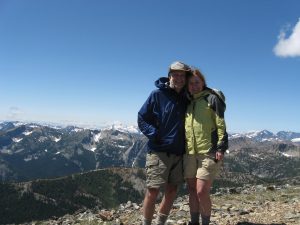The Physical Activity Guidelines Advisory Committee is composed of 17 nationally recognized experts in the fields of physical activity and health. These distinguished individuals agreed to serve on the Committee in a voluntary capacity to review current evidence and make recommendations that will help inform the next edition of the Physical Activity Guidelines for Americans. This post is part of a series of interviews with the Committee members to learn more about the men and women providing independent expertise and service to improve the health of the Nation.
Today, we are highlighting Dr. David Buchner, a Shahid and Ann Carlson Khan Professor in Applied Health Sciences at in the Department of Kinesiology and Community Health at the University of Illinois. On the Committee, Dr. Buchner is the chair of the Individuals with Chronic Conditions Subcommittee and is a member of the Aging Subcommittee.
What led to your interest in physical activity?
I trained as a geriatrician and became interested in the effects of exercise in preventing falls and improving physical function in older individuals. I enjoyed conducting research on the effects of exercise. Participants in the exercise programs commonly felt better and had improved physical function. Then, while I was a professor at the School of Public Health at the University of Washington in Seattle, I developed a broader interest in the health effects of physical activity in adults. So when a position opened at CDC to direct the Physical Activity and Health Branch, I applied for it. Taking that position was a pivotal step and my career focus shifted to physical activity and public health.
Why were you interested in participating in the Physical Activity Guidelines Advisory Committee?
While working at CDC, my branch provided support for the first edition of the Physical Activity Guidelines for Americans released in 2008. I was privileged to chair the writing group for these guidelines. When I left CDC, I became involved in research to fill gaps in research related to the health benefits of activity. And I observed the scientific literature about physical activity was expanding rapidly. For example, the availability of wearable devices such as accelerometers has led to new methods of studying the health benefits of activity. Given my familiarity with the first edition of the Guidelines and the growth in scientific evidence, I became excited about participating as member of the 2018 Committee.
What do you think are some of the barriers that prevent people from meeting the Guidelines?
The most often cited barrier is “lack of time,” but in my opinion, this phrase oversimplifies the situation. Given Americans commonly spend several hours a day watching television, it suggests to me people do not fully understand the importance of regular physical activity or how to fit enjoyable types of physical activity into daily life. Historically, most daily physical activity occurred at work. With increasingly sedentary jobs, it suggests that increasing physical activity while at work (e.g., walking meetings) could partly address this barrier. More availability of active transportation options addresses the barrier of “lack of time,” by allowing a person to commute to work and get physical activity simultaneously.
What tips would you give Americans who are trying to be more physically active?
I agree with the common advice that the best form of physical activity is the one you enjoy and can fit into your schedule. I would encourage Americans to find that activity and think about doing it in the morning before work, when there is less opportunity for interruption. Of the many factors that influence one’s level of physical activity, for me personally the most important factor is social support. If I plan to run, walk, or ride bikes with friend and family I am more likely to stay on track. Indeed, some of my favorite memories are from hiking, bike riding, and running road races together as a family.

~
The Office of Disease Prevention and Health Promotion would like to personally thank each of the members for their dedication and service on the Committee. The Committee’s independent review of the scientific literature is the result of thousands of hours of work and will culminate with the submission of the 2018 Physical Activity Guidelines Advisory Committee Scientific Report to the Secretary of the Department of Health and Human Services (HHS). HHS will use the report to develop the next edition of the Physical Activity Guidelines for Americans.